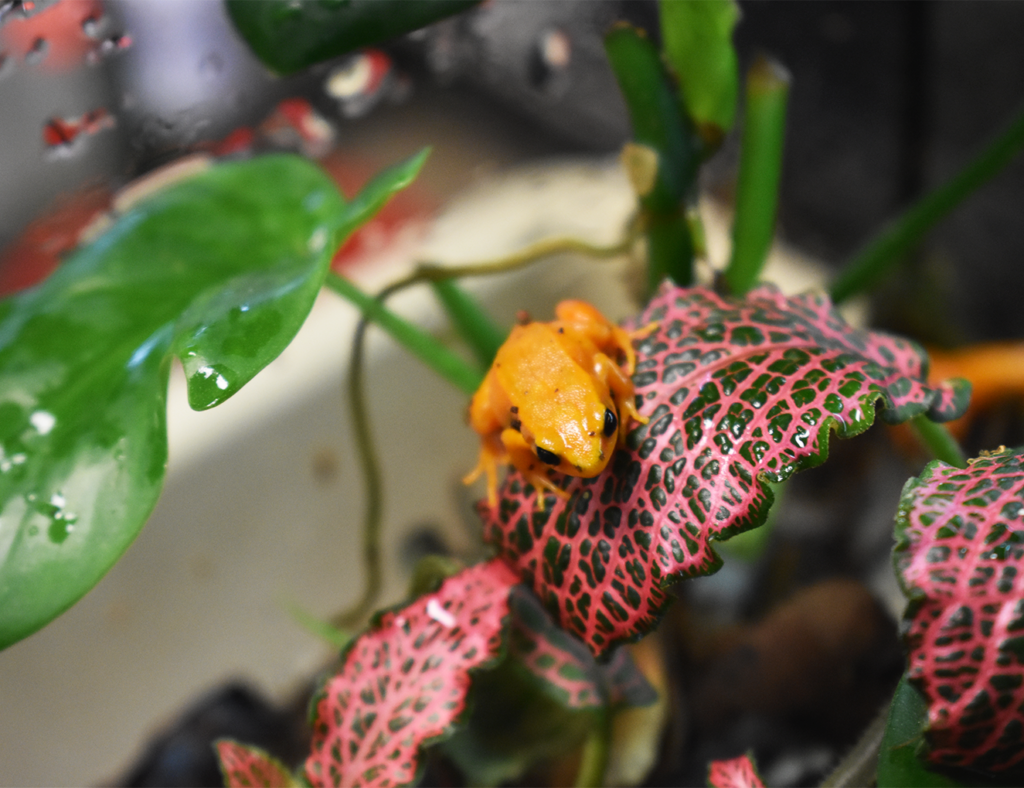Hoppy Hatching!
In school, we all learned the lifecycle of a frog and all its stages, from eggs, embryos, tadpoles, etc. But before that cycle even begins, breeding must take place. One year ago today, six golden mantella frogs hatched here at the Virginia Zoo under the care of the Reptile Team. This species is small in size and present brightly colored orange bodies with aposematic coloration (an appearance of a certain distasteful or poisonous animal). Their calls sound like a high-pitched ‘click’.
For successful breeding, frogs not only need to be paired appropriately, but they also need to be the proper age which is around 1.5-2 years old. Once those factors are in place, the next component is the diet which is critical to having healthy eggs and future froglets. Our frogs get a species-dependent diet that consists of fruit flies, pinhead crickets, bean beetles, and occasional wax worms for variety, which all get dusted with supplements each feeding.

Within the frog species, breeding differs where some frogs need special requirements, and some can breed without minimal effort. Our mantella frogs were kept as 3.1 (3 males, 1 female). They were put in a “dry” period where daily misting was significantly reduced and once spring came, they had their “wet” period that consisted of heavy misting to reflect the rainy season, and their food was increased drastically.
Once the environment was changed, the female laid her first viable clutch of eggs on April 5, 2021. Keepers removed the eggs and kept them in similar conditions in a separate container to have daily control over their humidity and to monitor their activity. On April 18, 2021, all the eggs hatched, and by June 9, 2021, most of all the tadpole developed limbs and was on land.
Breeding this species is very important because of its Critically Endangered status, according to the IUCN RedList. This species is native to Madagascar, and its main threats are habitat destruction and fragmentation. While other facilities have bred this species before, these six frogs are the first ones the Virginia Zoo has bred
To support all frog species, you can become a citizen scientist by joining a group called FrogWatch USA. Here at the Zoo, we do an annual course to help encourage more participating citizen scientists. Once the course is completed, you can go out and listen to frogs in your area, correctly identify them by their calls, submit your findings to the program’s online database and help researchers know what’s going on with frog populations all across the US!